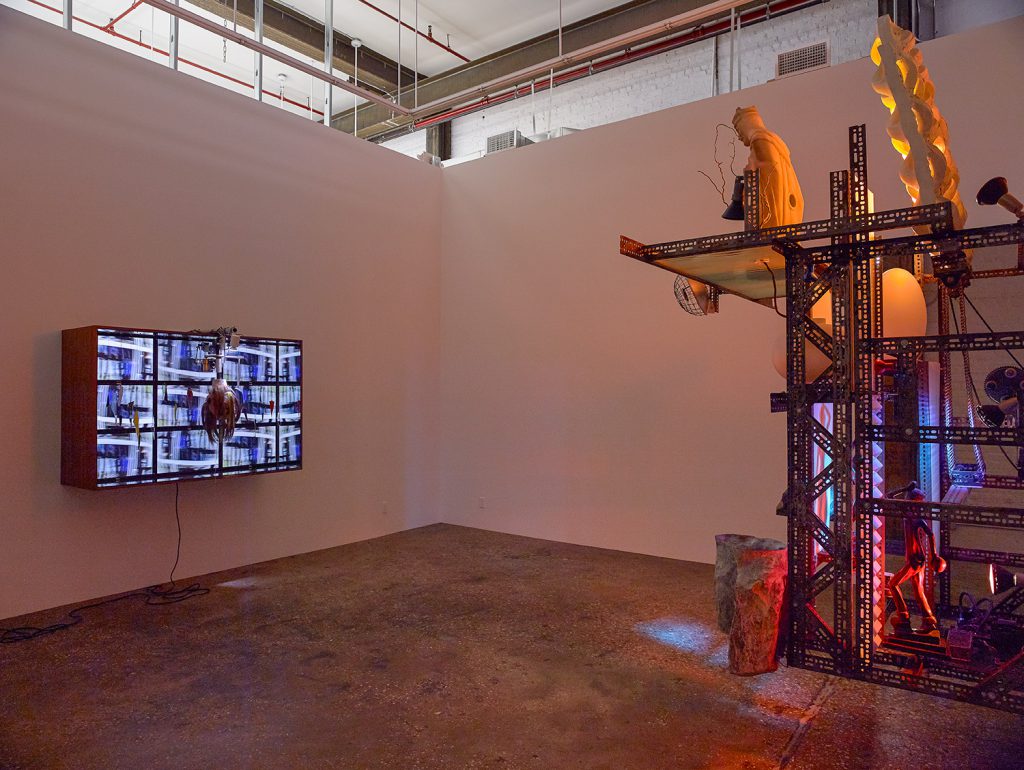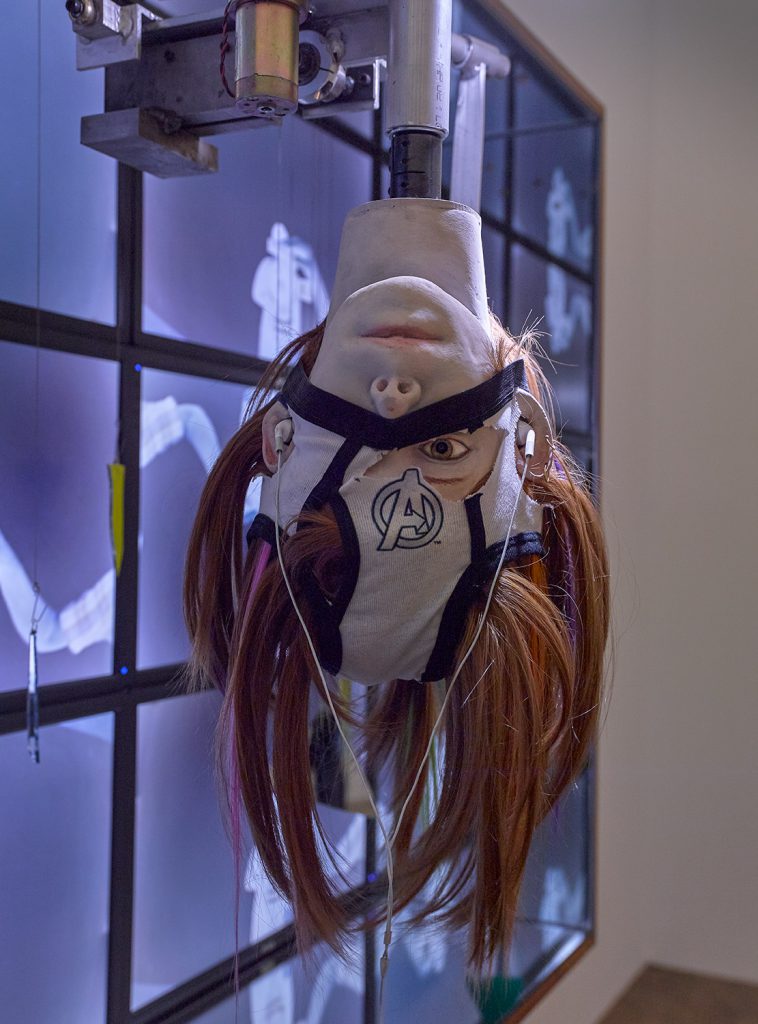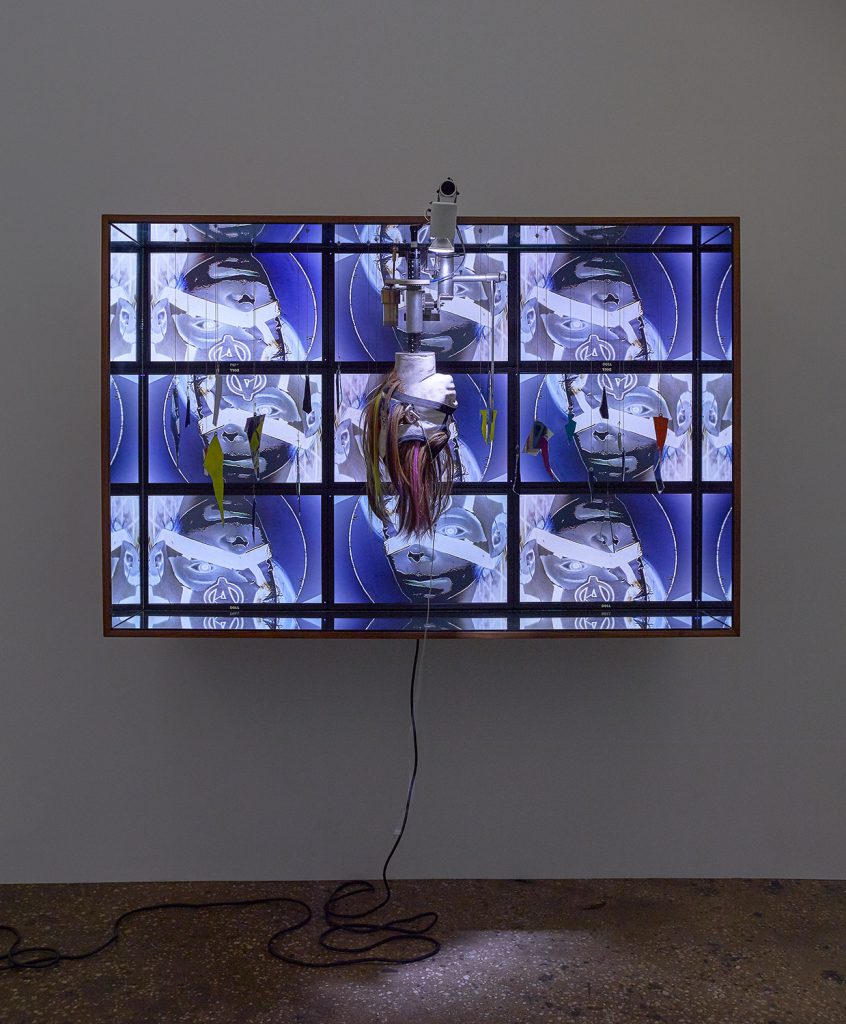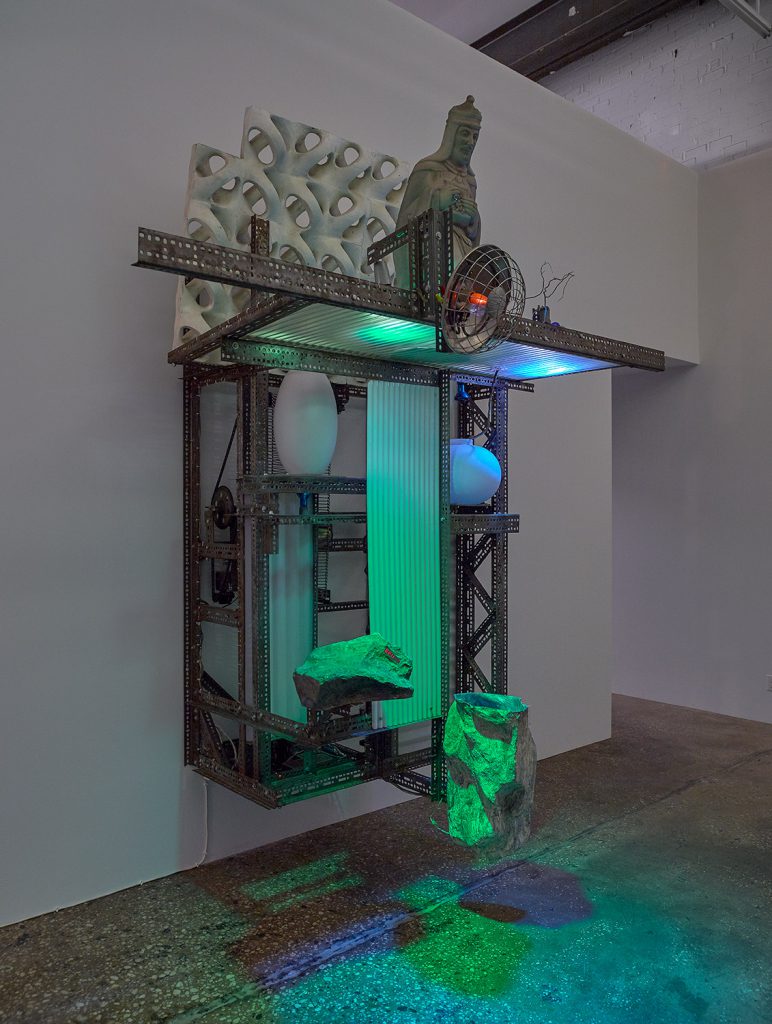Press Release
Century Pictures is delighted to announce its inaugural exhibition, featuring two works by Jon Kessler created 32 years apart. Throughout his career, Jon Kessler has drawn upon the most salient issues of our time. Surveillance, endless war, American Empire, the World Wide Web, climate change, and the refugee crisis have all figured heavily into his mechanically propelled installations and sculptures. By merging analogue and digital platforms, Kessler channels societal anxieties, while underscoring how easily technologies evolve or become obsolete.
Isolated Masses (For Peace), represented the artist’s first appearance at the Whitney Biennial in 1985. While increasingly portraying the West in decline, Kessler embraced Asian motifs in his work from the 1980’s and 1990’s. This pioneering sculpture articulates that embrace. A hand-made computer was programmed to synchronize a montage that brightens and dims. This “heartbeat” of the sculpture unfolds a tightly orchestrated 10-minute narrative. The viewer is guided through delicate figurines and Zen rock gardens. Industrial shelving and fiberglass screens provide an altar, as if expecting a séance to conjure Mies van der Rohe. One of the three biblical Magi is perched atop, lending serenity to the quasi-Baroque assemblage.
There is a certain transparency to the machinations of all Kessler’s work that is exemplified here. Gadgets such as old washing machine timers are employed alongside computer-controlled effects, hitching the sculpture between the industrial and digital ages. Hovering between sincerity and irony, Isolated Masses (For Peace) offers a cornucopia of spiritual souvenirs woven through a dime-store aesthetic.
Emerging on the heels of artists from the Pictures Generation, who made “pictures about pictures,” Kessler and the sculptors of his generation such as Jeff Koons, Robert Gober, and Haim Steinbach responded by making “things about things.” Critic Holland Cotter, writing about Kessler’s work in the 1980’s said: “Kessler’s jerrybuilt son-et-lumière kitsch technology was remarkable for its combination of formal theatrics and conceptual focus: its irradiated throwaway materials suggested how powerful the rejected could become.” These words are especially resonant today, where “the rejected” are not only powerful, but perhaps vengeful as well.
For I’m Nothing Without You (2012) Kessler has used the visage of his then 10-year-old nephew as “the motor for the work.” Ambivalent about the future his nephew might inherit, the sculpture’s focus is a disembodied adolescent whirling head on a mechanical arm. The head is adorned with piercings, and dons Captain America underwear. The appearance lends an air of Lord of the Flies tribalism, pitting playfulness against an accelerated foreboding. There is a warning of the rivalries that begin at the precipice of adulthood. The sculpture whirs and flashes, sees all, while also looking inward. Illustrative of the “power of mind over mind,”[1] a Panopticon perspective implicates the audience. Reflected in infinity mirrors, and then projected onto the screen, the viewer is led happily down the rabbit hole.
Jon Kessler is an American visual artist (b. 1957, Yonkers, New York). He has had numerous gallery and museum exhibitions, including at the Swiss Institute, New York; Louisiana Museum of Moderne Kunst, Copenhagen; MoMA PS1, Long Island City; Luhring Augustine, New York; Deitch Projects, New York; Kestner-Gesellschaft, Hannover; and Salon 94, New York, amongst others. Kessler’s work is part of numerous institutional collections including: MoMA, New York; Brooklyn Museum, New York; Saatchi Gallery, London; Walker Art Center, Minneapolis; MCA Chicago, IL; and MOCA Los Angeles, CA. His works Evolution and Exodus are currently on view as part of the 2017 Whitney Biennial. Jon Kessler is currently a professor of art at Columbia University. His studio is based in Brooklyn.
[1] English Philosopher, Social Theorist and originator of the institutional building design. Jeremy Bentham described Panopticon as “a new mode of obtaining power of mind over mind, in a quantity hitherto without example.”



















